Rambert is a pulsating hub of experiment and modernity in dance. Independent and fearless, committed to excellence and at the same time rooted in the community – its trademark characteristic is their capacity to bridge gaps between balletic high art and the here and now.
At its Sadler’s Wells show, their triple bill did not disappointed. Superlative dancers display perfect control over their bodies. They twist and jump, stretch and shake with hair-splitting precision in three original pieces by leading choreographers of our time.
Each piece is very different, each born from different outlooks, each inspiring utterly different sets of emotions, fears and hopes. First, supreme order and wondrous beauty; followed by post-modern nostalgia and violence; ending with abnegation and humiliation.
The first piece of the night is the mesmerising exquisiteness of Wayne McGregor’s PreSentient. A piece commissioned by the Rambert Company in 2002 before McGregor’s super-star ascent, becoming one of the leading choreographers of our times. Now resident choreographer at the Royal Ballet and founding artistic director of his own company Company Wayne McGregor, the piece is just as exacting, just as idiosyncratically him as later more well-known works created since.
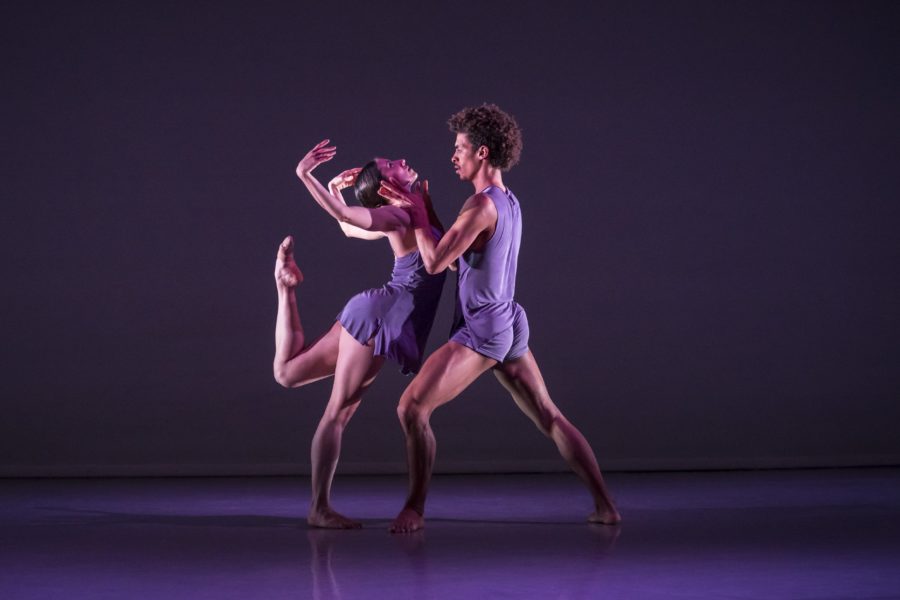
The piece is revived for the first time by Rambert. It is accompanied by the infinitely intricate music of Steve Reich’s Triple Quartet. The music is not so much a study in circular repetition as so many of Reich’s most famous pieces are, but rather an exploration of varieties of distortion on a recurring theme: an asphyxiating flow of a melodic line which ceaselessly flirts with disharmony, as if to say: ‘I don’t believe in limits’.
And this is also what is happening on stage with the dancers. A first solo gives the key, as the dancer methodically wriggles out of conventional uses and moves of the body, communicating that here, arms could be legs; legs can do anything arms can do better; hands can speak better than mouths; feet turn in, and pout, like upturned lips, striving for more than their conventional lot.
The soloist finds her place in the group. A sequence of geometrical patterns seizes the stage: the group assembles and disassembles in what appears at first, to be frenzy but which soon gives way to a majestic ordering of space and time. Just like under the focus of a microscope, the dynamics of the group come into focus with crystal configurations which had at first blush, been invisible to the naked eye. Now, internal constellations form: dyads, triads, a monadic dancer left on her own is magnetically bounced from one group to another. Her solitude itself powered by the staying power of the adjoining clusters. The geometry is mind-blowing, the clarity is mind-soothing, the overall effect is breath-taking.
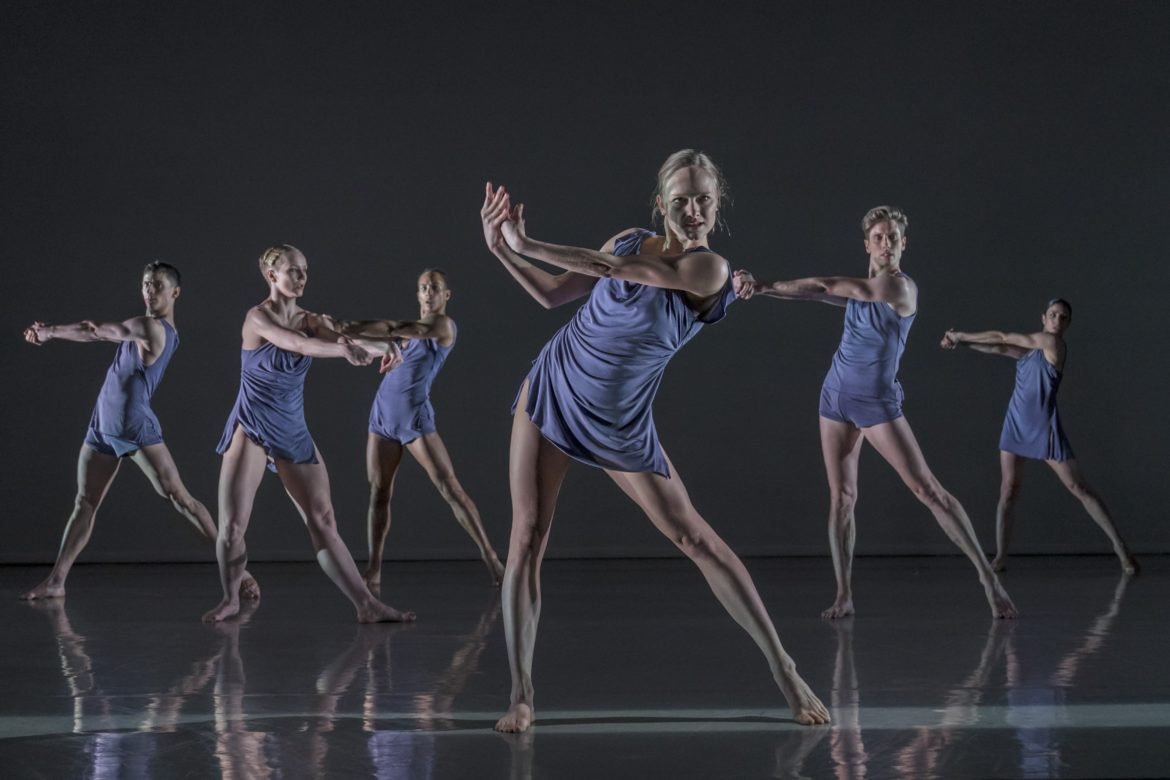
One of McGregor’s staple choreographic investigations is the triad: three dancers interlaced, exploring possibilities. In all the major works that have marked his trail-blazing career since this piece, this particular grouping has evolved with ever more complexity. The triad is the moment for philosophical thought in the dance, where the relation to the other explodes in its many concomitant, and at times contradictory, truths: respect, care, deference, violence and curiosity. The insistent presence of the third figure constantly checks the temptation for simplicity which characterises, by contrast, the dyad.
And indeed, in the pas-de-deux, the relation between the dancers is completely different. There are two pas-de-deux in PreSentient, which strangely overlap in a disharmonious canon: a first duo on its own is tender to the brink of sentimentalism; it is joined three-quarters into its romantic conversation by a second couple in the background, rougher, pyramidal where the first couple was spherical.
The duos are exquisite, first and foremost because they stop time. They correspond to the slow movement in the music, and each dancer’s movement thickens the slow pace of the music. The dance oozes out of time where before and after, the dancing bodies canter forward.
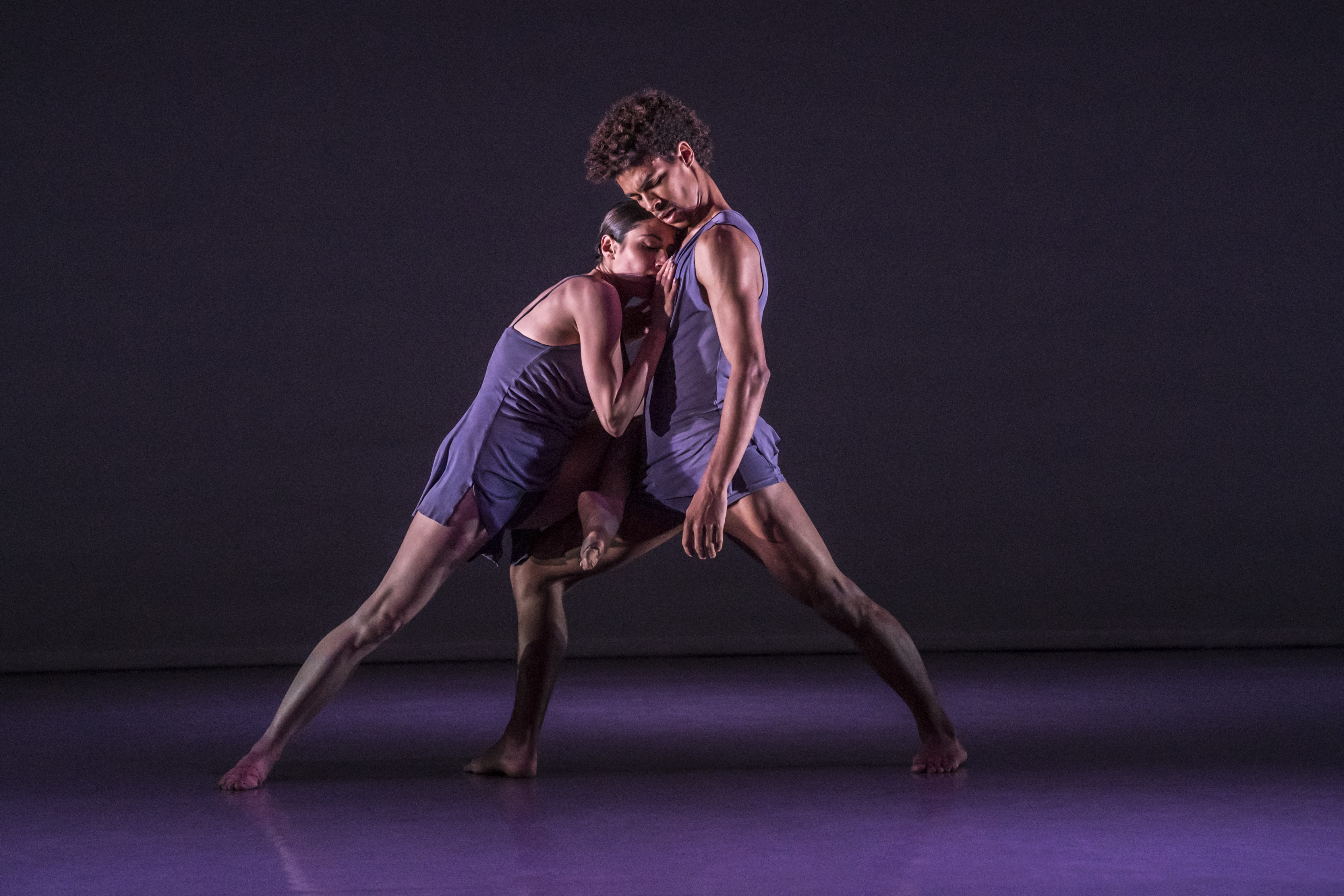
There is love, there is hope, there is beauty, reconfirmed in the last part of the piece, where the group again pours light into all of the space by filling it with the infinite variety of lines and the joy of complexity. The confirmation is that a human being can overcome her limits.
The stage setting changes dramatically from day to night with the second piece of the evening, by Marion Motin, entitled Rouge – the red of hell, of traffic lights, and the wrong part of town to wake up in. The piece is premiered in this show, Motin is a creator whose career saddles the world of ballet and the world of pop. And her piece is exemplary of the two worlds. It begins with a desolate smoky stage with a guitarist in one corner adorned with a cowboy’s hat which appears also to be producing white smoke.
Since there is no smoke without fire, something hellish, jolty and hot is eventually, in all logic, unleashed. The work plays with imagery from the 70s glam rock, and 80’s metal and disco scenes.
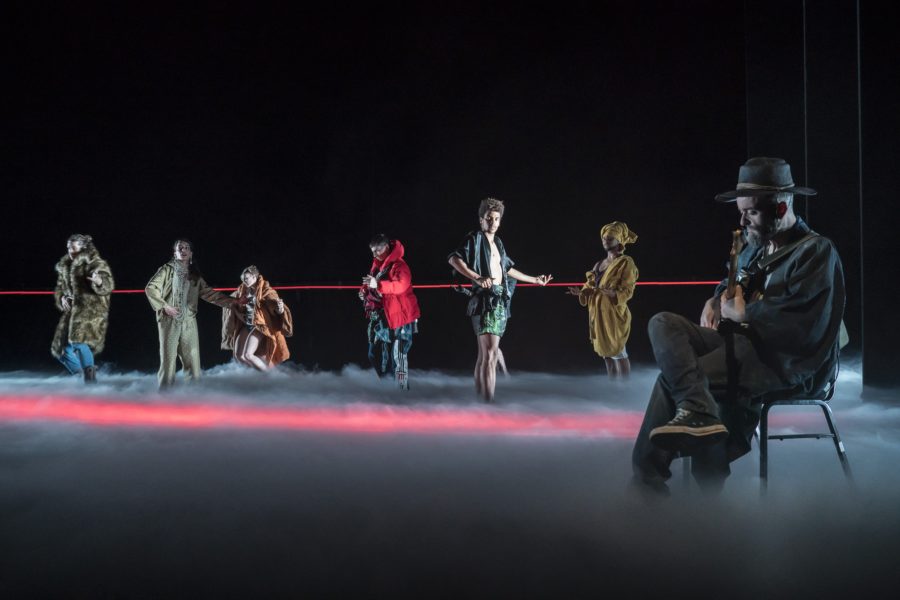
The mix produces a millennial fantasy of those years, creating a mirage of false nostalgia which the wailing electric guitar and the glam vintage costumes of the dancers enhance. The dancers soon throw off their costumes, and let their hair down in deed and in dance, in a display of Priscilla Queen of the Desert meets Hair the Musical meets contemporary ballet and its obsession for bare-chested beatings of the heart.
The piece is perhaps best described as ‘provocative’: rave-style movements interspersed with almost-balletic duos. But the dance is more akin to a series of violent attacks, usually from a female dancer on an indifferent male dancer who throws the girl off or does not know what to do with her, or how to dance together. The attempts are abandoned, and the small group of the dancers finds a middle ground in sterile tolerance of vicinity rather than contact or communication. The dancers then mostly retire into fists shaking rhythmically to the sky, punctuated with violent full body shakes.
There is a definite aesthetics of decadence bearing the ethical message that all is doomed, all is hurt, all is savage. There are only fallen angels, and redemption is an epileptic’s dream house.
It is the dance of the age of anger, unrepentant but still somewhat expectant. And for that, it maintains the lingering attention of the audience and, though somewhat belied, an enduring sense of excitement.
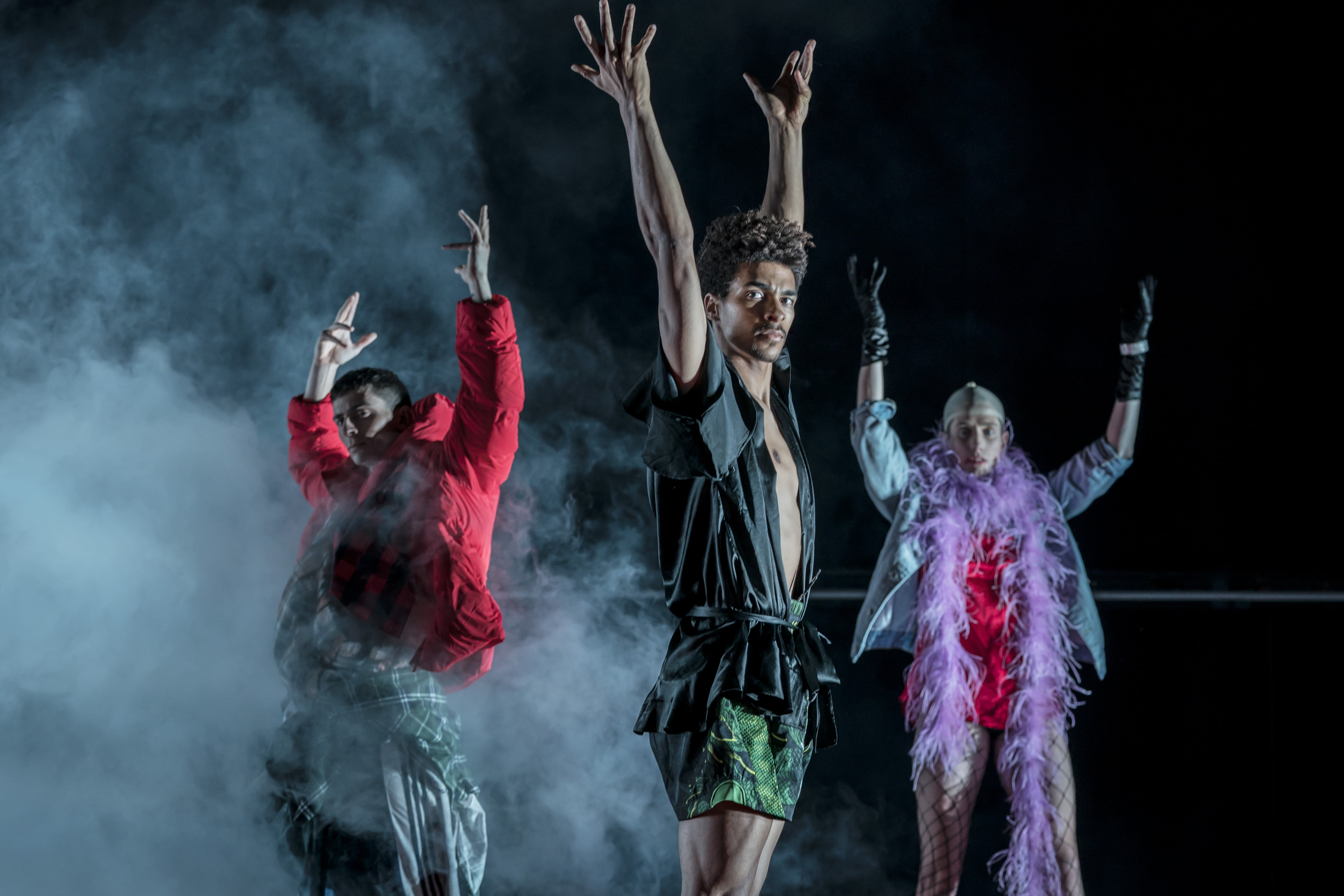
The last piece, In Your Rooms, by Hofesh Shechter is not about expectations, nor hope nor indeed anger. It is a work born out of a deep sense of humiliation and powerlessness. All throughout the piece, the dancers take on physical attributes of resignation and degradation: shoulders rounded, hunched backs, eyes fixed on the floor, drooping heads fraught with the unshakeable weight of all the heavens and hells of all the worlds past and present, on their thin, nerdy, shoulders.
The work was created for London’s The Place in 2007 and contributed to seal Shechter’s world-wide reputation of daring and striking post-modernism. If you are like me and feel like running out of the room when you get shouted political – and politically-correct – mottos from the stage with direct imperatives of what we should or should not think and do, then, like me, you will probably suffer from undue restraint if you feel the duty to sit through this part of the show.
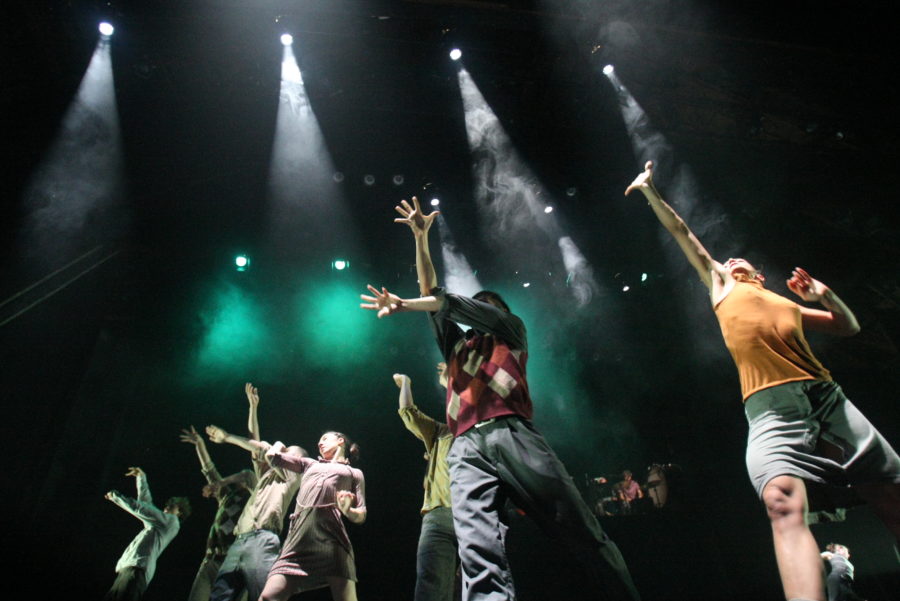
The lighting is a small consolation. Lee Curran creates a suave, golden pastel light which almost frees the mind to wander towards parallel worlds in which the jejune, unfunny, moral high-ground cynicism (which really must be the lowest form of modern dance), is cast aside.
Shechter is a popular and acclaimed choreographer. His talent lies in framing the synchronicity of a chaotic group. It is a sign of the times that audiences find this so appealing. The dance is the sublimation of how a political demonstration should look like, where everyone – unique and miserable that we are (as he tells us) – come together nevertheless to oppose injustice or fascism or anything which is wrong. This now, can only happen on a dance-stage. It is another millennial fantasy of simplicity, and in truth, the opposite of dance. But then, so much dance is.
And so ends a charged night for Rambert: adventurous, courageous, brilliant and silly, all in one.
Reviewed on 14th of May at Sadler’s Wells


